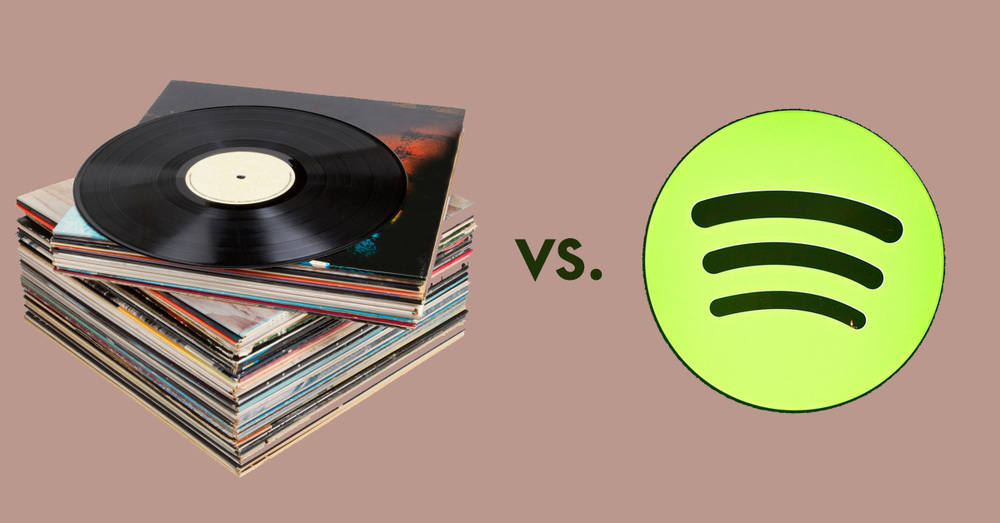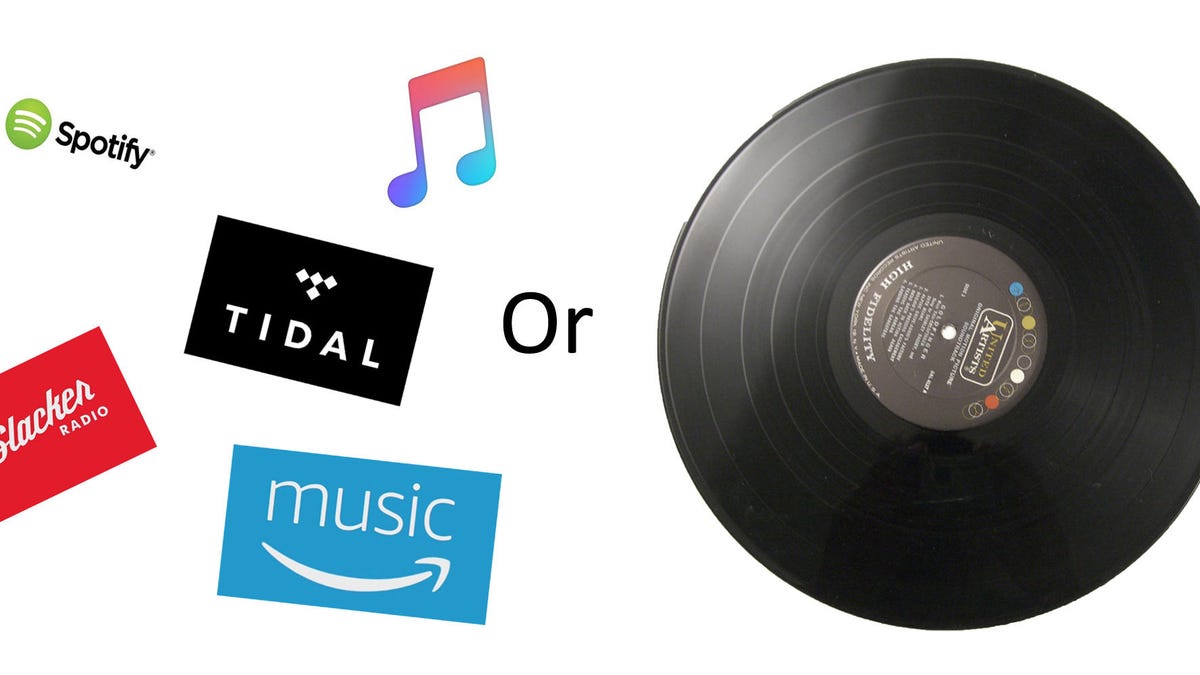
Spotify Vs Vinyl: The Ultimate Battle of Sound Quality
Spotify offers digital convenience and vast music libraries, while vinyl provides a tangible, nostalgic listening experience. Both have unique advantages and cater to different preferences.
Spotify and vinyl represent two distinct eras of music consumption. Spotify delivers instant access to millions of songs, playlists, and podcasts at the touch of a button. Vinyl records, on the other hand, offer an analog sound that many audiophiles find richer and more authentic.
Vinyl’s tactile nature, with its large album art and physical presence, creates a unique connection for listeners. Digital streaming is perfect for those who value convenience and variety, while vinyl attracts those who cherish sound quality and collectability. Each format brings its own set of benefits, appealing to diverse music lovers.

History And Evolution
The journey of music consumption has evolved dramatically. From vinyl records to digital streaming, the transformation is remarkable. Understanding the history and evolution provides insight into their unique characteristics.
Spotify’s Digital Journey
Spotify launched in 2008. It revolutionized how we access music. With a vast library, users stream millions of songs instantly. Digital streaming became the norm, making physical formats less common.
Spotify offers playlists, personalized recommendations, and offline access. The platform’s algorithms suggest new music based on user preferences. Subscription plans enable ad-free listening and high-quality audio.
Spotify’s integration with social media allows users to share music effortlessly. The platform supports artists through streaming royalties, making it a vital part of the modern music industry.
Vinyl’s Timeless Appeal
Vinyl records date back to the early 20th century. They offer a unique, tangible music experience. Collectors cherish the large album artwork and the warm, analog sound.
Vinyl’s resurgence in recent years is notable. Enthusiasts appreciate its authenticity and nostalgic value. Record stores and vinyl fairs attract diverse audiences.
The physical interaction with vinyl, from placing the needle to flipping the record, creates a ritualistic experience. Each record tells a story, making it a treasured possession for many.
| Aspect | Spotify | Vinyl |
|---|---|---|
| Launch Year | 2008 | Early 20th century |
| Music Access | Instant streaming | Physical records |
| Sound Quality | Digital | Analog |
| Portability | High | Low |
| Personalization | Algorithm-based | None |
| Social Integration | Yes | No |
Sound Quality Comparison
Many music lovers debate the sound quality of Spotify versus Vinyl. Both have unique characteristics that appeal to different audiences. Let’s dive into the sound quality of these two formats.
Digital Audio Clarity
Spotify offers digital audio clarity that many listeners appreciate. The music on Spotify is often processed and compressed. This compression helps to maintain a consistent quality across different devices.
Spotify uses advanced algorithms to balance the sound. This ensures the audio is free from hisses and pops. The result is a clean and precise sound. Digital audio clarity means the music is crisp and detailed.
Analog Warmth
Vinyl records provide a unique analog warmth. This is often described as a richer, fuller sound. Vinyl captures the nuances of the original recording. This includes the subtle imperfections that add character to the music.
The analog warmth of vinyl is due to its continuous signal. Unlike digital, it doesn’t chop the sound into bits. This results in a more natural and warm listening experience. Many audiophiles love this aspect of vinyl records.
| Feature | Spotify | Vinyl |
|---|---|---|
| Audio Clarity | High | Moderate |
| Warmth | Low | High |
| Imperfections | Minimal | Present |
Spotify and Vinyl both offer unique sound experiences. Digital audio clarity and analog warmth cater to different tastes. Choose the one that suits your listening style.
User Experience
The user experience of listening to music is important for many people. Whether using Spotify or vinyl, each offers unique benefits. Let’s explore these differences.
Convenience Of Streaming
Spotify provides unmatched convenience. You can access millions of songs instantly. It’s perfect for those who value ease and speed.
- Access to a vast library of songs
- Instant playback with no need for physical media
- Ability to create and share playlists
- Available on multiple devices: phones, tablets, and computers
- Offline mode for listening without internet
Spotify’s user interface is intuitive and easy to use. You can search for songs, albums, or artists quickly. The app also provides personalized recommendations.
Tactile Joy Of Vinyl
Vinyl records offer a unique tactile experience. Handling a vinyl record is a joy for many music lovers.
- Feeling the weight of the vinyl
- Carefully placing the needle on the record
- Admiring the large album artwork
- Hearing the warm, rich sound that vinyl produces
Vinyl creates a more immersive listening experience. You engage more senses: touch, sight, and sound. It makes listening to music feel special and intentional.
Comparison Table
| Feature | Spotify | Vinyl |
|---|---|---|
| Convenience | High | Low |
| Sound Quality | Good | Excellent |
| Portability | Very Portable | Not Portable |
| User Engagement | Moderate | High |

Accessibility And Availability
In today’s digital age, music lovers have varied options for listening. Spotify and Vinyl records offer unique experiences. Each has its own strengths in terms of accessibility and availability. Let’s explore both.
Global Reach Of Spotify
Spotify is available in over 170 countries. This wide reach allows millions to access their favorite songs easily. You only need an internet connection and a device.
Spotify boasts a library of over 70 million songs. It also offers podcasts, playlists, and radio stations. Users can discover new music daily. Spotify’s algorithm suggests songs based on listening habits.
Here are some key features of Spotify’s accessibility:
- Instant access to a vast music library
- Available on various devices including smartphones, tablets, and PCs
- Offline listening with premium subscription
- Personalized playlists and recommendations
Vinyl’s Limited Presence
Vinyl records are cherished by many for their unique sound quality. But their availability is limited compared to digital platforms.
Vinyl records must be purchased from physical or online stores. They require a turntable for playback. This makes them less accessible for casual listeners.
Here are some factors affecting vinyl’s accessibility:
- Physical space needed for storage
- Turntable and equipment required for listening
- Availability dependent on record stores and online shops
- Higher cost for purchasing individual albums
In summary, Spotify offers unparalleled global access and convenience. Vinyl records provide a unique, tangible listening experience but with more limitations.
Cost And Value
When comparing Spotify and vinyl, cost and value are important factors. Each offers unique advantages. Let’s explore these aspects in detail.
Subscription Vs. Purchase
Spotify operates on a subscription-based model. This means you pay a monthly fee. Here is a simple table to illustrate the costs:
| Spotify | Vinyl |
|---|---|
| $9.99/month for Premium | $20-$40 per album |
With Spotify, you get unlimited access to millions of songs. But, for vinyl, each album is a one-time purchase.
Collectible Nature Of Vinyl
Vinyl records hold a special place for collectors. They are physical items you can touch and feel.
- Limited editions increase value
- Artwork and sleeves add to the experience
- Older records may become valuable over time
Vinyl offers a sense of ownership. It’s different from the digital access Spotify provides.
Spotify is convenient and cost-effective. Vinyl is tangible and collectible. Each has its own charm and value.
Environmental Impact
The environmental impact of music consumption is a growing concern. Comparing the carbon footprint of streaming services like Spotify with the sustainability of vinyl records reveals surprising differences.
Carbon Footprint Of Streaming
Streaming music on platforms like Spotify contributes to carbon emissions. Data centers, servers, and network infrastructure require significant electricity. This electricity often comes from fossil fuels.
A study found that streaming music generates more carbon emissions than physical formats. This is due to the ongoing energy consumption for data transmission and storage.
Consider these points:
- Energy usage of data centers
- Electricity for servers
- Carbon emissions from data transmission
Streaming one song repeatedly increases its carbon footprint. This is different from owning a physical copy, which has a one-time carbon cost.
Sustainability Of Vinyl
Vinyl records have a different environmental impact. Manufacturing vinyl involves fossil fuels and chemicals. But, records are durable and can last decades.
Key sustainability factors for vinyl:
- Durability of records
- Reusability of physical formats
- Lower ongoing energy consumption
Vinyl records can be reused and resold, reducing waste. Collectors often keep records for many years, limiting the need for new production.
Here’s a comparison table:
| Aspect | Streaming | Vinyl |
|---|---|---|
| Initial Carbon Footprint | Low | High |
| Ongoing Energy Use | High | Low |
| Durability | Not Applicable | High |
| Reuse and Resale | Not Applicable | High |
Each format has its environmental pros and cons. The choice depends on individual priorities and values.
Future Of Music Consumption
The future of music consumption is an exciting topic. Technology and tradition shape how we listen to music. Spotify and vinyl records are two popular methods. They represent the future and the past. Let’s explore how each impacts the future of music listening.
Technological Innovations
Spotify uses advanced technology. It offers instant access to millions of songs. You can create playlists and share them with friends. The app learns your music taste. It suggests new songs based on your likes.
Vinyl records rely on analog technology. They provide a unique listening experience. The sound quality is warm and rich. Vinyl records need a turntable to play. This adds to their charm.
Here is a comparison:
| Feature | Spotify | Vinyl |
|---|---|---|
| Accessibility | Instant and online | Physical and offline |
| Sound Quality | Digital | Analog |
| Portability | High | Low |
Nostalgia And Tradition
Many people love vinyl for its nostalgic value. It reminds them of the past. Collecting records is a hobby for some. Each record has unique cover art. The process of playing a vinyl record is special. It involves taking the record out of its sleeve. Placing it on the turntable. Gently lowering the needle. This ritual makes the music feel more personal.
Spotify offers convenience. You can listen to any song, any time. It has no need for physical space. All your music is in one place. This suits a busy lifestyle. There are no scratches or skips in digital music. It stays perfect forever.
Let’s look at the key points:
- Vinyl provides a tactile experience.
- Spotify offers unmatched convenience.
- Vinyl is for collectors and enthusiasts.
- Spotify is for on-the-go listeners.

Frequently Asked Questions
What Sounds Better, Spotify Or Vinyl?
Vinyl offers a warmer, authentic sound that many audiophiles prefer. Spotify provides convenience and a vast music library. Preferences vary.
Is Vinyl Better Quality Than Streaming?
Vinyl offers a warmer, richer sound quality compared to streaming. Audiophiles often prefer vinyl for its authenticity. Streaming provides convenience and accessibility, but may lack the depth found in vinyl recordings. Each format has its own advantages, depending on user preference.
Does Music Sound Better On Vinyl Or Digital?
Vinyl offers a warmer, richer sound, preferred by audiophiles. Digital music delivers clarity and convenience. Preferences vary.
Why Do Audiophiles Listen To Vinyl?
Audiophiles listen to vinyl for its warm, rich sound quality. Vinyl records offer an authentic listening experience. They enjoy the tactile engagement of handling records.
Conclusion
Choosing between Spotify and vinyl depends on your preferences. Spotify offers convenience and variety. Vinyl provides a nostalgic, tactile experience. Both have unique benefits. Decide based on your lifestyle and music taste. Enjoy your musical journey, whether digital or analog.
